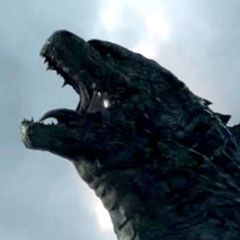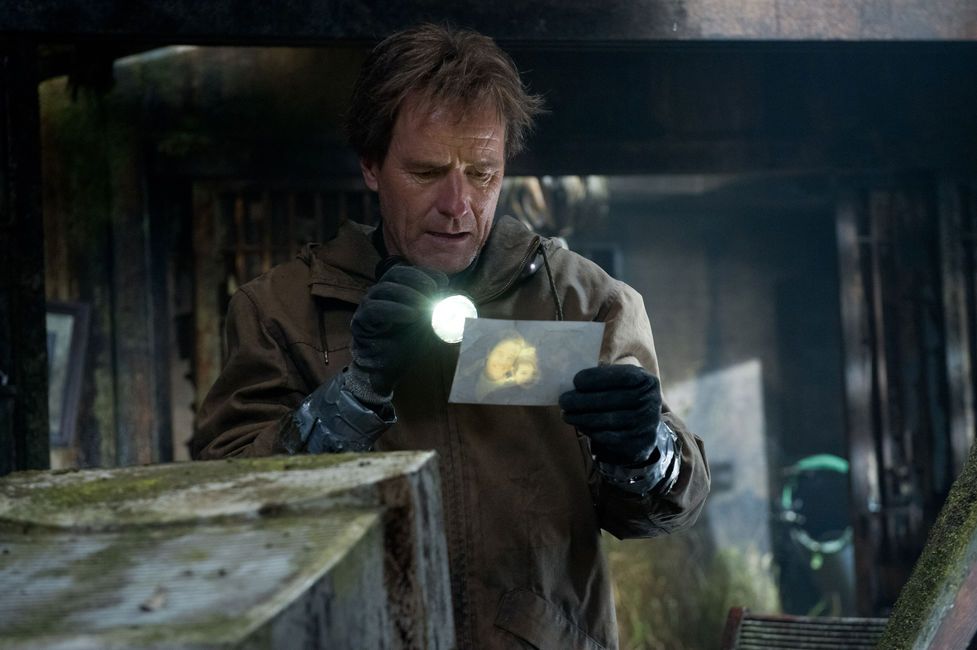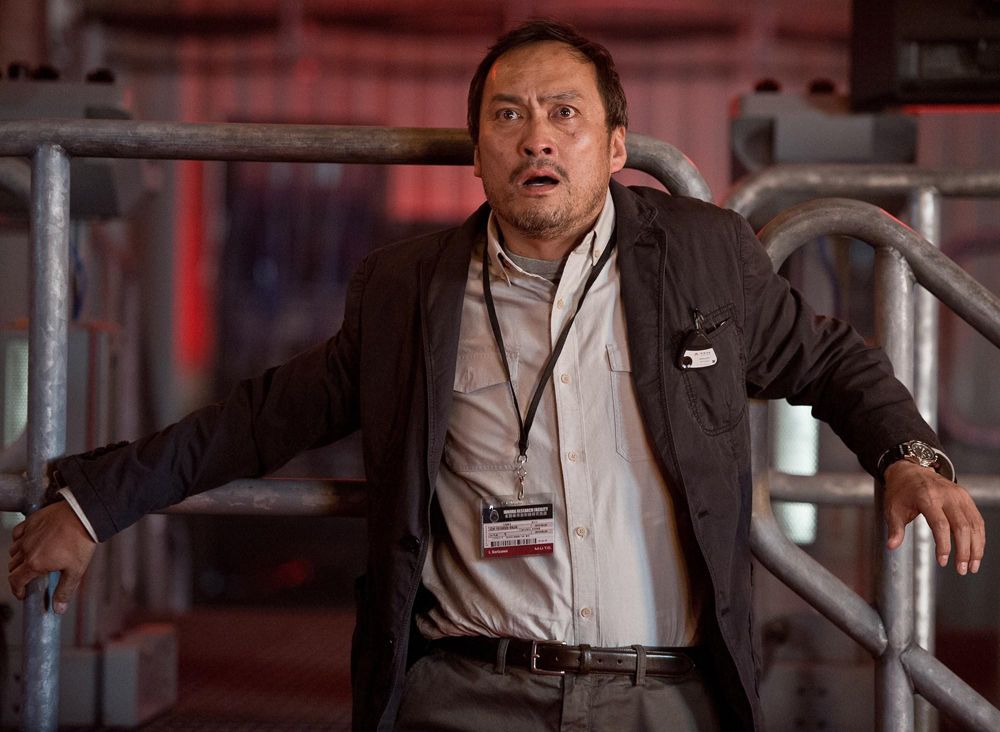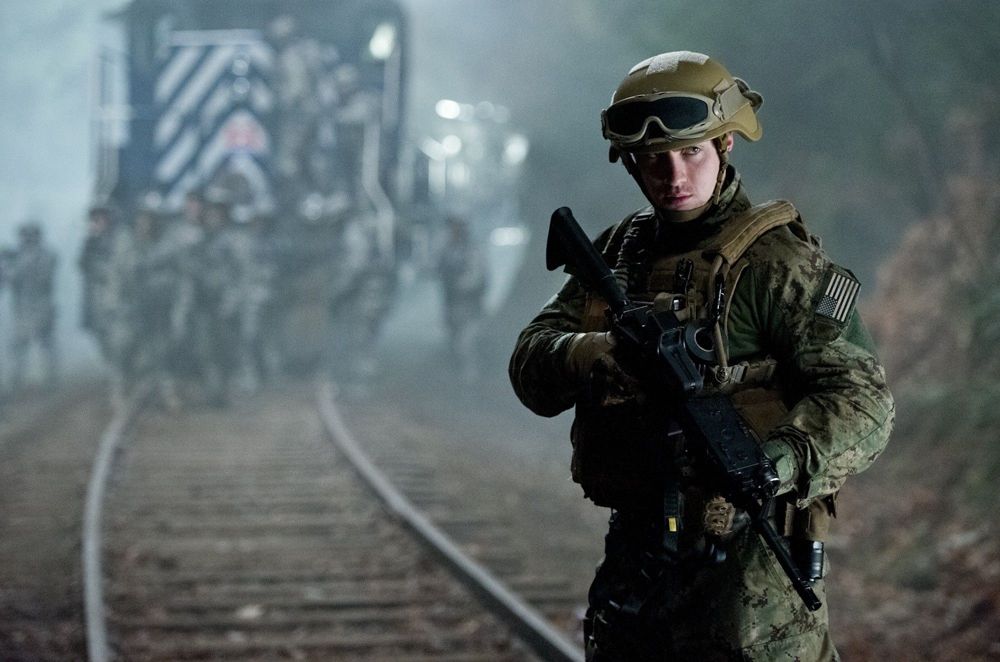After 16 years, Godzilla is back in theaters, bigger than ever – if not necessarily better.
Director Gareth Edwards’ franchise reboot begins with ominous seismic activity that draws the attention of engineer Joe Brody (Bryan Cranston), who’s so concerned with the anomaly and the potential threat it poses to the Japanese nuclear reactor where he works, that he misses the birthday surprise planned for him by his wife Sandra (Juliette Binoche) and young son Ford. Unfortunately, it quickly becomes apparent that it’s no ordinary earthquake, and events take a dark turn, leading to the quarantine of the Brody’s Japanese home.
Fast-forward 15 years, and Ford (Aaron Taylor-Johnson) is now a bland U.S. soldier married to an equally uninteresting nurse (Elizabeth Olsen) with a child of his own. When he learns his father trespassed into the quarantine zone, Ford flies to Japan and is drawn into Joe’s obsession to uncover the truth of what actually happened all those years ago. It’s not long before the two come into contact with scientists Serizawa (Ken Watanabe) and Vivienne Graham (Sally Hawkins), who reveal classified footage of Godzilla stirring in the ocean depths, and admit that two other enormous creatures have been brought out of the bowels of the Earth. As the monsters emerge onto the surface at the same time, the film becomes a story of survival as Ford treks across a devastated world in an attempt to reach his family.
The best parts of the film are the earliest, as Cranston unleashes his acting might, spitting out agonized speeches and chewing scenery so thoroughly that Godzilla would be proud. Unfortunately the Breaking Bad star is barely in the film, because he’s shunted aside as the focus shifts to his son, the real protagonist, played by a near-catatonic Taylor-Johnson. The Kick-Ass star has little to work with -- his dialogue consists of mainly “No, sir,” “Yes, sir” and promises to his wife that he’ll be home soon -- because Ford is such an obedient soldier and son that there’s nothing beneath the surface for an actor to explore. Cranston’s Joe is motivated by guilt and obsession, and Watanabe’s Serizawa by a mystic idealization of Godzilla and his fears for the planet’s future. But Ford is pulled by external forces batting him around Japan and the United States like an action figure at the mercy of a child, lacking any agency of his own. Even his mission to go home to his family is given to him by his father; at no time does Ford act of his own volition or run contrary to what others tell him. The film’s decision to focus on the ho-hum Ford and his equally boring wife makes jettisoning the enticingly anguished Cranston in favor of Taylor-Johnson all the more grating.
Luckily, however, the film doesn’t get rid of the charismatic Watanabe, who imbues every scene he’s in with enjoyable melodrama. Godzilla is essentially divided in half by tone, one part serious action film as Ford runs home to his family, the other pure 1950s B-movie camp wherein Army generals designate monsters “MUTO” and “Godzilla” and talk about nuclear weapons as the only solution while scientists gasp and plead for other courses of action.
That second part is where Watanabe shines as the perpetually shocked Serizawa, whipping off his glasses at the drop of a hat and otherwise ratcheting the drama up to 11. One can see the glee in the actor’s eyes as he declares, “The arrogance of man is thinking nature is in our control ... and not the other way around!” or as he theatrically halts in front of camera to drop bits of plot-changing exposition. Although clearly meant to bring to mind the serious Dr. Daisuke Serizawa from the 1954 original, Watanabe’s lines are so silly yet delivered so profoundly that it’s clear he’s more interested in tapping into the ridiculous versions of the stock scientist in later Godzilla films. His performance, as well as that of David Strathairn as Serizawa’s stoic pro-nuke foil Admiral Stenz, mostly makes up for the stretches of film in which we’re forced to endure Olsen and Taylor-Johnson.
It’s this campy half that the monsters inhabit, and despite fan worries about the size of Godzilla, he and the other CG creatures look amazing. Seen almost entirely from human perspective, the enormity of the monsters is their greatest asset. Godzilla and the MUTOs barely notice the people they crush or the buildings they rip apart. Indeed, it’s obvious the human world is nothing but an obstacle course for these giants, and not a particularly difficult one; the film has a lot of fun with monsters obliviously destroying Las Vegas landmarks, or having the insect-like MUTOs smashing people underfoot like, well, insects. There’s a palpable sense of humor too in scenes where Godzilla manages to flood an entire block and take down a building yet allows a dog time to untie his leash and get away to safety. The film is clearly paying homage not just to the classic monster-versus-monster Godzilla films but to the PG-friendly B-movie: The world may be going up in flames, and soldiers may be dying left and right, but not a single child or pet is placed in real danger.
Unfortunately, the monster-sized problem with the movie is its refusal to do more than tease its biggest character: There’s simply not enough Godzilla. The filmmakers seem to think the audience has come to see a boring soldier hitchhike to San Francisco to reach his equally placid family. That’s of course wrong; we’re here to see Godzilla fight monsters and destroy major cities. For all the fantastic effects work bringing Godzilla and the MUTOs to life, we never see them for more than 30 seconds at a time. The camera constantly cuts away to the human characters, or to news feeds or extraneous B-plots. That’s funny once, even twice, but after the fourth time of being teased with Godzilla versus MUTO only to have the shot end with a door literally being slammed in the audience’s face, it becomes unbearably frustrating.
Worse, when the film finally gets to what should be the climactic monster battle, the camera doesn’t stay on Godzilla but instead follows Ford, with the giant-sized action pushed into in the background. For a movie named for him, Godzilla barely rates more screen time than Cranston.
While Godzilla’s third-act battle incorporates moves from all the classic fights we’ve seen in previous franchise installments, this only serves to make the audience wish they were watching one of those films instead. That men fighting in rubber suits are more entertaining than 400-foot CG behemoths clashing is bitterly disappointing. Yes, the two seconds Godzilla and the MUTOs grapple is great, but unfortunately that’s all you get. Meanwhile, you’ll have an uninterrupted 10 minutes of Ford fumbling with a boat, and then passing out.
That lack of focus plagues every aspect of the film, dragging down would could be an otherwise-interesting story: Cranston is set up as the protagonist, only for it to be decided that Taylor-Johnson will instead carry the film. The first act establishes Godzilla as serious sci-fi, only for the second to shift to high camp before the third act changes gears again to straight-up action. There are a lot of directions one can take the Godzilla, but unfortunately Edwards decided to try them all at once, leading what began as a riveting movie to stumble toward a disappointing and mediocre conclusion.
While the 2014 Godzilla is fun and leagues better than the 1998 version, it lacks the charm and excitement of the classic 1950s and ‘60s monster films it references. One can only hope the inevitable sequel will be placed in more decisive hands.
Godzilla opens Friday nationwide.




